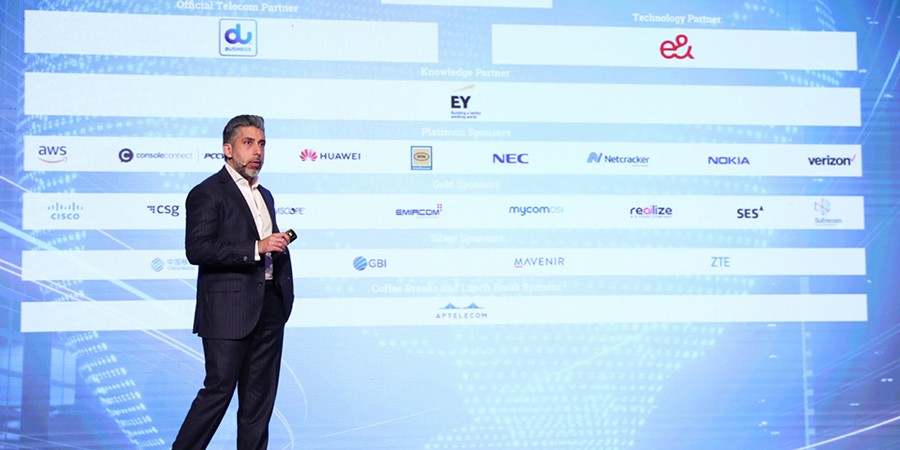This year’s Telecom Review Leaders Summit’s Knowledge Partner was EY, the leading global consulting firm. Fuad Siddiqui, Global Partner at EY spoke to the Telecom Review about his company’s efforts in helping enterprises in their digital transformation journeys.
How is EY helping businesses to transform in the digital economy?
I am delighted to be here at this prestigious conference with so many leaders. When it comes to EY approach to digital transformation, we have established ourselves with a dedicated sector focus working across industries such as manufacturing, transportation, government, life sciences, technology, and telecoms. We're working to bring the promise of emerging technologies and new business models to help our clients through their transformation journey, so that they can make no-regret moves. When it comes to business model innovation, that is innovation at scale, deploying the necessary architectures which are future proof, that’s technology at speed, and helping industries with their transformation by putting people at the heart of this. Human at the center is a big deal for helping successfully navigate the transformation journeys for enterprises in sectors across different verticals.
How are 5G and the cloud going to change business models? How can businesses prepare for this?
The whole notion or the imperative of what 5G and cloud offer, is, in my mind, still not fully understood or exploited to its maximum potential. What do I mean by that? What it might mean is that the digital connectivity solutions that 5G offers are built around distributed cloud architectures, and what organizations, and industry verticals have to figure out is how to deploy digital multi-access connectivity and computing solutions at the edge to drive automation of the use cases. Bringing 5G, Edge clouds together with embedded AI, security, and the application suites on top with a business model that is more consumable for the enterprises i.e., as-a-service. We, at EY, believe that's the future — an interplay of new technologies, and innovative business models with humans at the center will be essential for the success of the industrial transformation and future enterprises.
How should companies strategize for their sustainability initiatives given the growing environmental consciousness of global markets?
Sustainability is big on the agenda for many companies. We speak to several CEOs, and they now have a focus to put ESG and sustainability at the core of their strategic plans. The Intergovernmental Panel on Climate Change (IPCC) has put together a number of interesting and meaningful recommendations. And one of the work items is around the digitalization of the sector and how we use technology better. I think that's the area the tech sector must double down on because the efficiencies and the advantages that 5G and the associated technology ecosystem provide could have a pronounced and meaningful impact. Extending that to all sectors, changing the operating model with tech assistance and enabling new ways of doing business will bring change, resulting in lowering global greenhouse gas emissions (GHG) and consequently improving the corresponding GHG/GDP ratio. The digitalization of sectors through technology will be critical in driving toward and achievement of IPCC goals.
How can companies build a culture of innovation in their workplace? What are EY offerings to meet these parameters?
Innovation is central. With all the major headwinds, including rampant inflation fears, emerging from the COVID-19 pandemic downside, some of the companies have been retrenching a bit and going into a more sustaining innovation, which is fine because they want to maximize the promise of today's technology options and continue to innovate sustainably. At the same time, you don't have to be super disruptive but instead can be creatively innovative in making sure that you are fully harnessing the power of advancements in technology and the resulting ecosystem that needs to come together. That is where EY is connecting the dots for ecosystem enablement, making sure that the transformation journey, which must put humans at the center, is driven and supported by EY, working hand in hand with our clients, and industry stakeholders delivering outcome-driven transformation and positive change.
What is your advice for companies that are looking at mergers and acquisitions as a growth strategy in the current global market dynamics?
Every year, we do a number of surveys, and one of them was a CEO outlook survey, where we spoke to CEOs around the world in 51 countries and 13 sectors. We found out that the majority of CEOs consider M&A a strategic growth opportunity. Approximately 40% of them are thinking about investing, divesting assets, and figuring out a JV strategy as central to diversification and finding new growth. Our advice to customers is that they have to think about their core business — what they are good at, and what adjacencies they need to venture into. For example, we are working with an energy company that wants to make sure that they have well-connected networks, not just in their localized factory environments, but out in the oil fields as well. As a result, they are trying to venture into partnerships with satellite providers while building partnerships with local telcos around private and public networking as well as in non-terrestrial space. M&A is going to continue, but with enhanced due-diligence and financial rigor.










